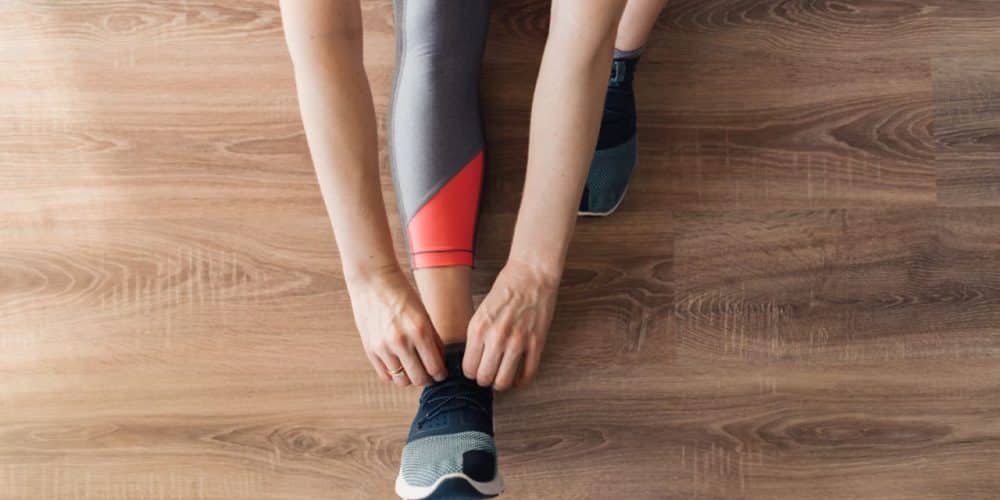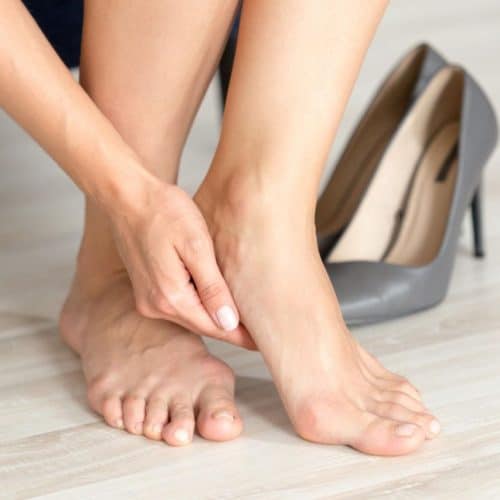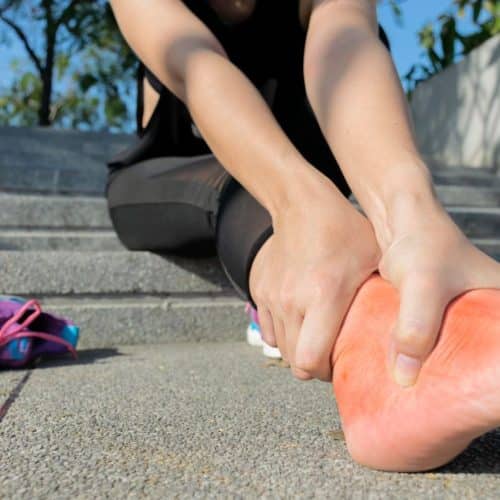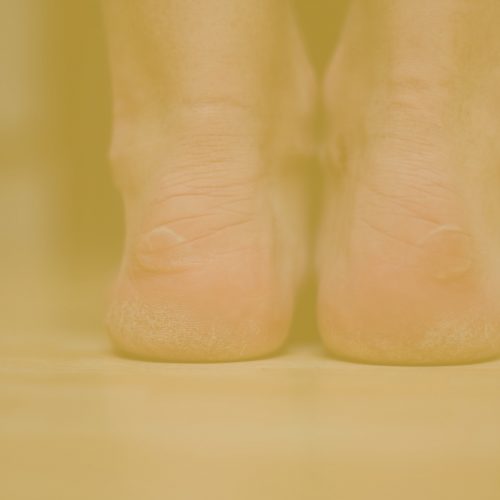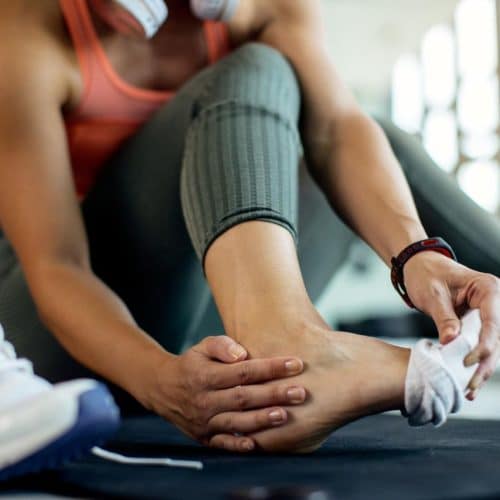Foot health is an often overlooked aspect of our overall well-being. One common foot issue that many people face is the formation of calluses. While a small amount of callus can be a protective layer against friction, excessive callus formation can lead to discomfort, pain, and other complications. This blog post delves into the significance of treating calluses, especially for those with underlying health conditions like diabetes.
What are Calluses?
Calluses are thickened areas of skin that form in response to repeated friction or pressure. They commonly develop on the feet due to the constant pressure exerted while walking, standing, or wearing ill-fitting shoes. While they might seem harmless, untreated calluses can lead to various issues.
Protection vs. Problem
The skin is a remarkable organ, capable of adapting to various external pressures and frictions. One such adaptation is the formation of calluses, particularly on the feet. While they are a natural response to repeated friction, it’s essential to differentiate between when they are protective and when they become a problem.
1. The Protective Role of Calluses
- Natural Armor: Calluses serve as the body’s natural armour. When our skin experiences repeated friction or pressure, it thickens in that area. This thickened skin, or callus, acts as a protective layer, preventing the underlying skin from damage.
- Shock Absorption: Calluses can be natural cushions, especially on the feet. For those on their feet a lot, whether due to their profession or lifestyle, these calluses can help absorb some of the shocks that the feet endure, reducing the risk of other injuries.
- Adaptive Response: Our body is always looking out for us. The formation of calluses is an adaptive response, signalling areas of high stress or friction. The body says, “I’ve noticed this area needs extra protection.”
2. When Calluses Become a Problem
- Excessive Thickness: While a thin layer of callus can be beneficial, an excessively thick callus can cause discomfort. The increased thickness can create pressure points, leading to pain when walking or standing.
- Potential for Cracking: Thick calluses can become dry and brittle, especially on the heels. This can lead to painful skin cracking, which opens the door for potential infections.
- Underlying Blisters: Sometimes, a callus can form over a blister. This can be particularly problematic as the blister might go unnoticed, leading to further complications if it bursts or becomes infected.
- Aesthetic Concerns: For many, thick calluses can be a cosmetic concern. They can appear yellowish and make people self-conscious, especially when wearing open-toed shoes or sandals.
- Masking Other Issues: A callus might sometimes form over areas of the foot, causing other problems, such as warts or foreign objects embedded in the skin. This can delay the detection and treatment of these underlying issues.
Calluses, in moderation, are the body’s way of protecting itself. However, when they become excessive or cause discomfort, it’s a sign that there might be an underlying issue or that the skin is under too much stress. Regular foot care, including moisturising and gentle exfoliation, can help manage calluses. But if they become problematic, seeking advice from a healthcare practitioner is crucial.
Diabetes and Calluses
Diabetes, a condition that affects millions worldwide, profoundly impacts various body systems, including the health of the feet. One of the foot-related complications that individuals with diabetes need to be particularly vigilant about is the formation of calluses. Understanding the intricate relationship between diabetes and calluses is crucial for maintaining optimal foot health.
1. Why are Individuals with Diabetes at Higher Risk?
- Neuropathy: One of the most common complications of diabetes is peripheral neuropathy, a condition where the nerves in the extremities, especially the feet, get damaged. This damage reduces sensation, meaning individuals might not feel pain, heat, or cold as effectively. As a result, they might not notice the initial discomfort or pressure that leads to callus formation.
- Reduced Blood Flow: Diabetes can lead to peripheral arterial disease, where the blood vessels in the legs and feet become narrow, reducing blood flow. Adequate blood flow is essential for skin health and healing. Reduced circulation means any foot injury, including those caused by calluses, takes longer to heal and is more prone to complications.
- Skin Changes: Diabetes can cause changes in the skin, making it drier and more susceptible to cracking. These cracks can become entry points for infections, especially in or around callused areas.
2. The Potential Complications
- Foot Ulcers: If a callus becomes too thick or there’s continuous pressure on one area, the skin underneath the callus can break down, leading to a foot ulcer. Given the reduced healing capacity in individuals with diabetes, these ulcers can become severe and challenging to treat.
- Infections: Open sores, cracks, or ulcers can become infected. In the worst cases, if left untreated, these infections can spread to the bone, leading to osteomyelitis, a severe bone infection.
- Charcot Foot: A less common but serious complication is Charcot foot, where the bones of the foot become weakened and can fracture. Continuous walking on the affected foot can lead to deformities. Calluses can form over these areas of bone deformity, further complicating the situation.
3. Preventive Measures
- Regular Foot Inspections: Given the reduced sensation, individuals with diabetes should make it a daily routine to inspect their feet for any signs of calluses, blisters, cuts, or other abnormalities.
- Professional Foot Care: It’s advisable for those with diabetes to see a podiatrist regularly. They can help in the early detection and treatment of calluses and guide proper foot care.
- Moisturise: Keeping the feet moisturised can prevent the skin from becoming too dry and cracking. However, avoid putting lotion between the toes, which can lead to fungal infections.
- Proper Footwear: Shoes that fit well and provide adequate support can reduce the risk of callus formation. Custom orthotics might also be beneficial for some individuals.
Home Care
Taking care of our feet is vital for overall health and comfort. While professional help is indispensable for certain foot issues, a robust home care routine can prevent many common foot problems and ensure our feet remain in top condition. Here’s a comprehensive guide to foot care at home:
1. Basic Foot Hygiene
- Daily Washing: Clean your feet daily using lukewarm water and a mild soap. This helps remove dirt, sweat, and bacteria, reducing the risk of infections.
- Drying: Thoroughly dry your feet, especially between the toes after washing. Moist environments can become breeding grounds for fungal infections.
- Moisturising: Apply good foot cream or lotion to hydrate the skin. This can prevent dryness and cracking. However, avoid applying moisturiser between the toes to prevent fungal growth.
2. Callus and Corn Management
- Soaking: Soak your feet in warm water for about 10-15 minutes. This softens the skin, making it easier to address calluses and corns.
- Gentle Exfoliation: Use a pumice stone or foot file to exfoliate thickened skin areas gently. This helps in reducing calluses. Remember to be gentle and avoid over-exfoliating, which can lead to soreness or even injury.
- Moisturising Pads: Over-the-counter moisturising pads can be used for corns. They provide cushioning and release moisturising agents to soften the corn.
3. Nail Care
- Trimming: Trim your toenails regularly using a good quality nail clipper. Cut straight across and then round the tips in a gentle curve to prevent ingrown toenails.
- Avoid Cutting Too Short: Cutting nails too short or rounding them excessively can lead to ingrown toenails.
- Nail Hygiene: Clean underneath the nails using an orange stick or a nail brush. This prevents the accumulation of dirt and reduces the risk of fungal infections.
4. Footwear Considerations
- Proper Fit: Always wear shoes that fit well. Ill-fitting shoes can lead to blisters, calluses, and other foot issues.
- Breathability: Opt for shoes made of breathable materials. This ensures that sweat evaporates quickly, keeping the feet dry.
- Alternate Shoes: Wear a different pair of shoes two days in a row. This gives them time to air out, reducing the risk of fungal infections.
- Insoles and Cushioning: Consider using cushioned insoles if you’re on your feet. They provide extra comfort and reduce pressure on certain parts of the foot.
5. Regular Self-Inspection
- Routine Checks: Make it a habit to inspect your feet regularly. Look for cuts, blisters, redness, swelling, or nail changes. Early detection can prevent minor issues from becoming major problems.
- Sensation Test: Occasionally, check the sensation in your feet using a soft object like a feather or a piece of cotton. This can help identify areas with reduced sensation that might be prone to injuries.
Seek Professional Help
Foot health is a crucial aspect of our overall well-being. While many minor foot issues can be addressed with home remedies, there are times when professional intervention becomes necessary. Seeking the expertise of a podiatrist can make all the difference in diagnosing, treating, and preventing foot-related complications. One such trusted name in the realm of podiatry is Well Heeled Podiatry.
1. Why Seek Professional Help?
- Expert Diagnosis: While the internet is a treasure trove of information, self-diagnosis can often lead to misinterpretations. A podiatrist can provide an accurate diagnosis based on a thorough examination, ensuring that the root cause of the problem is addressed.
- Tailored Treatment Plans: Every individual is unique, and so are their feet. Podiatrists can design treatment plans tailored to an individual’s needs, ensuring optimal outcomes.
- Advanced Treatment Options: Podiatrists can access advanced treatment modalities that might not be available for home use. This includes specialised equipment, therapies, and medications that can expedite the healing process.
- Preventive Care: Beyond addressing existing issues, podiatrists can offer guidance on preventive measures, helping individuals avoid potential foot problems in the future.
2. The Well Heeled Podiatry Difference
- Experienced Team: We have a team of experienced and dedicated professionals committed to providing the best care possible. Our expertise ensures that patients receive top-notch treatment and advice.
- State-of-the-Art Facilities: We ensure patients can access the best diagnostic and treatment tools with modern facilities equipped with the latest podiatric technology.
- Holistic Approach: We believe in a holistic approach to foot care. They address the immediate concern and investigate underlying causes, ensuring comprehensive care.
- Educative Focus: Empowering patients with knowledge is a cornerstone of Well Heeled Podiatry’s philosophy. We invest time in educating patients about their conditions, treatment options, and preventive measures, ensuring they are well informed and can make the best decisions for their foot health.
- Convenient Appointments: Recognising our patients’ busy lives, we offer flexible appointment schedules, ensuring that foot care doesn’t become a hassle.
While it’s commendable to take initiative in one’s health, there are times when professional expertise is indispensable. For matters of the feet, turning to a trusted name like Well Heeled Podiatry ensures that you’re in capable hands. Whether it’s a persistent callus, a nagging pain, or a routine check-up, prioritising professional care can pave the way for happy, healthy feet.
Conclusion
Foot health is integral to our overall quality of life. Understanding the importance of treating calluses and taking preventive measures can ensure our feet remain healthy and pain-free. Remember, when in doubt, always seek advice from a healthcare practitioner.



